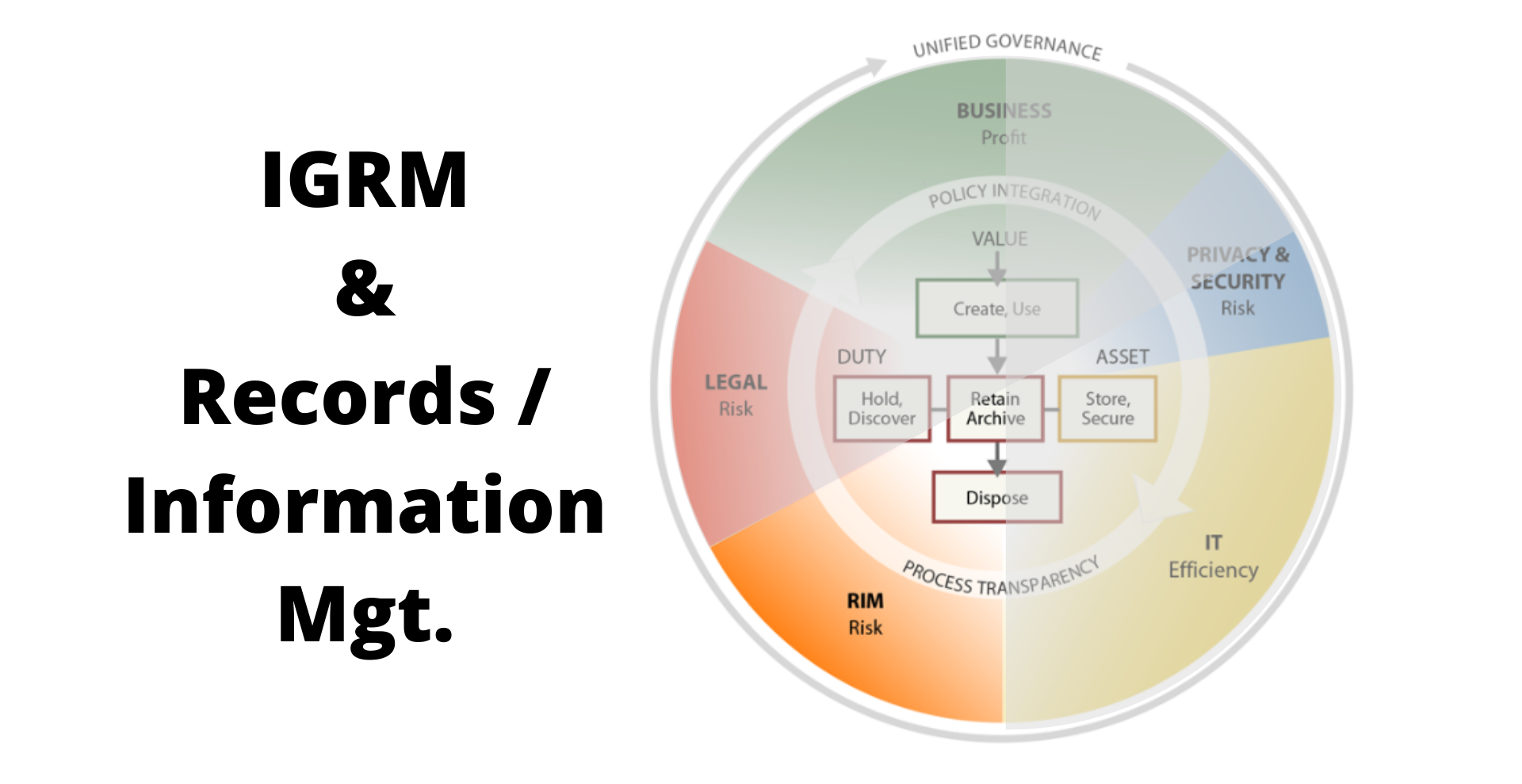
Written by Doug Austin, Editor of eDiscovery Today
A couple of weeks ago, I introduced a new blog series on the IPRO blog called Considering the 5 Stakeholder Groups of the Information Governance Reference Model (IGRM) and I set the stage for the series by discussing the IGRM model in general, the complexity of information to be managed by organizations today and identified the five stakeholder groups. Last week, I began my look at the stakeholder groups by starting with Legal stakeholders. This week, I continue the series by focusing on the records and information management (RIM) stakeholders.
RIM Stakeholder Information Needs
Records and information management (RIM) stakeholders not only have their own perspective on the IGRM, they even have their own professional community to which many RIM professionals belong. Formerly known as the Association of Records Managers & Administrators, ARMA International (ARMA) is a community of almost 6,000 records management, information management, and information governance professionals who harness the benefits and reduce the risks of information. ARMA provides resources, education, certification, networking opportunities and even a yearly conference (which, like so many conferences this year, will be virtual in 2020 and is coming up in a few weeks).
RIM professionals who are ARMA members operate according to a standard of Generally Accepted Recordkeeping Principles® (now simply known as “The Principles®”), which guide information management and governance of record creation, organization, security maintenance and other activities used to effectively support recordkeeping of an organization. Those eight principles are as follows:
- Accountability
- Transparency
- Integrity
- Protection
- Compliance
- Availability
- Retention
- Disposition
A “tip” for you: if you take the first letter of each of the principles, it spells out “A TIP CARD”. Details about The Principles (including a guide, a maturity model and a certificate training course) are available from the ARMA website.
RIM’s Relation to Other Stakeholder Groups
To accomplish its role from an Information Governance standpoint within an organization, RIM needs to collaborate with the other stakeholder groups by owning the process of Retention and Disposition. While influential across all of The Principles, RIM stakeholders should set the requirements for retaining and disposing of data within an organization by which other stakeholder groups comply, working with Legal and Privacy/Security to achieve conformity on legal and regulatory requirements.
Other than the documentation and policies that they create in supporting their role as records managers within an organization, RIM stakeholders aren’t typically users of information within the organization – they help set standards by which the other stakeholder groups use it, and for how long.
RIM Stakeholder Recommendations for Better Information Governance
Here are some recommendations for RIM stakeholders to help an organization improve its overall Information Governance program:
- Take the Lead in Information Governance Initiatives: Most of the other stakeholder groups are users of organizational information in some way, but RIM’s role is to lead the information governance program through management, education and thought leadership to accomplish organizational goals for managing information effectively.
- Manage Organizational Data Mapping Activities: While the other stakeholder groups must actively participate in the data mapping process, RIM should lead the effort to continue to identify where data is located within an organization, working with the other stakeholder groups to implement a process that keeps the organizational data map evergreen.
- Keep Current on Legal and Technology Trends That May Impact Organizational Requirements: RIM professionals need to coordinate with Legal and IT to keep current with legal trends (such as the changing data privacy landscape I discussed last week with new regulations like Europe’s General Data Protection Regulation (GDPR) and California’s California Consumer Privacy Act (CCPA) and technology trends (such as the various sources of data illustrated in the Internet Minute infographic). RIM stakeholders don’t have to be the definitive experts in either area, but need to understand both well enough to support legal and technology trends working with Legal and IT stakeholders.
- Join and Participate in ARMA: The best way to learn best practices from a records management and information governance standpoint is to join a group of other like-minded professionals that are wrestling with the same challenges you are! ARMA International has numerous programs for training & certification, as well as networking, to enable you to learn lessons from others in terms of what works well and what mistakes to avoid. If you haven’t joined ARMA already, consider doing so to stay current on records management best practices and trends.
- Look for Other Educational Opportunities: To keep current on legal and technology trends, attend webinars to learn more about both areas and consider setting aside 5-15 minutes a day to read about legal and technical concepts (the IPRO blog and eDiscovery Today are great places where you can do that). Doing so can facilitate the effort to coordinate with Legal and IT to understand the trends and what they may mean to the organization’s information governance goals.
Next week, we’ll move along the IGRM from records management to the goals and considerations for Information Technology (IT) within an organization. See you then!
For more educational topics from Doug Austin related to eDiscovery, cybersecurity and data privacy, follow, eDiscovery Today! And as part of the continued educational partnership between IPRO and eDiscovery Today, he’ll be here in the IPRO Newsroom next week with more educational content!



